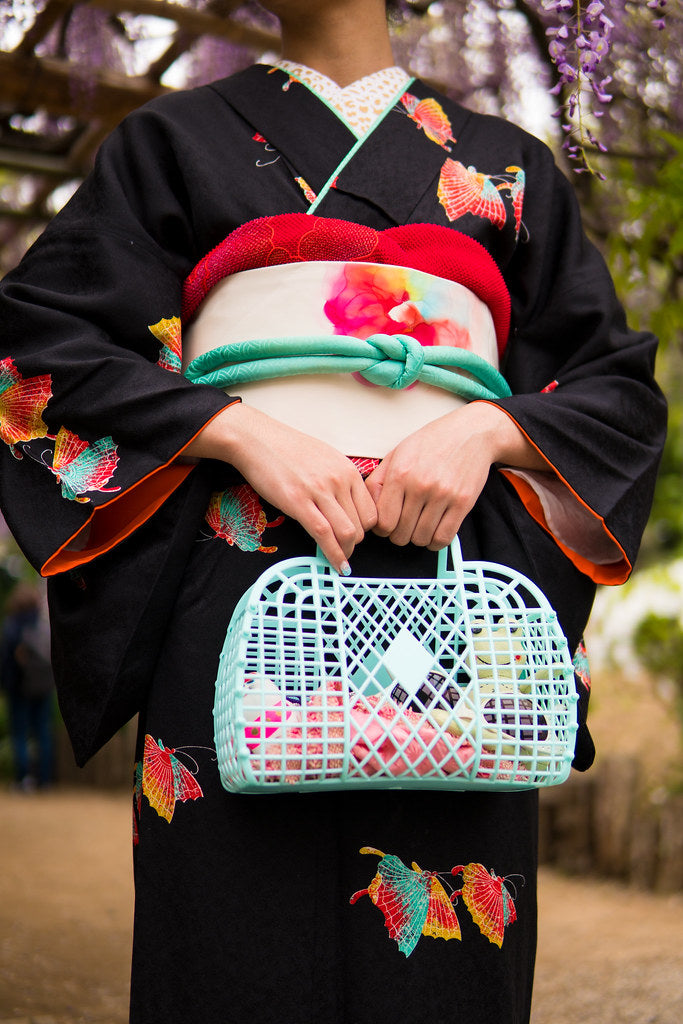Japanese Kimonos – Difference Men vs. Women!
Step into the world of traditional Japanese fashion, and you'll be captivated by the allure of kimonos! These elegant garments have been cherished for centuries, and they boast unique styles and features for both men and women.
But what exactly are the differences between Men's and Women's kimono?
Splash of Colors
When it comes to colors, Japanese kimonos offer a delightful palette for all genders. However traditionally, women's kimonos tend to be more vibrant and adorned with eye-catching hues, ranging from soft pastels to rich, bold shades. They often boast a lot of patterns and designs as well, usually floral ones. In contrast, men's kimonos often lean towards more subdued tones and plain colors, with an emphasis on deep blues, dark greens, and earthy browns.
 |
 |
Patterns and Motifs
One cannot help but marvel at the exquisite patterns and motifs that adorn kimonos. Women's kimonos boast a wide array of intricate designs, including delicate floral patterns, animals, and graceful landscapes.
On the other hand, men's kimonos typically feature more understated patterns, such as geometric shapes, stripes, or discreet nature-inspired elements.
Also mens kimono ensemble often have intricate artworks hidden in the lining of the Haori jacket, which can only be seen when said jacket is taken off.
Length and Silhouette
The length and silhouette of kimonos differ between genders. Women's kimonos are generally longer, trailing on the floor when untied. They have to be adjusted in length by tying the "ohashori", a fold below the waist. Ladies kimonos are accompanied by a broader obi (sash) that is tied in the back in different styles depending on occasion and obi type. There are also many different obi types.

Men's kimonos, on the other hand, are shorter, fitting the height of the wearer and dressed like a bath robe. Accompanied by a narrower belt (kaku obi) that has more simple ways of tying. The obi also is worn much lower (generally on the hip bone and upper buttocks) than a woman's one which is worn around the waist.

Another very visible difference between men's and women's kimonos is the under arm opening, called "miyatsukuchi". Ladies kimonos have an opening in the armpit area which are necessary for kimono dressing (and also come in handy for breastfeeding.) The sleeves of gentlemen's kimonos however are closed and fully attached to the side seam.
Layers of Elegance
The art of layering is an essential aspect of wearing a kimono, adding an extra dimension to their charm. Kimonos often feature multiple layers, including an innermost kimono underwear, padding to straighten out ones silhouette and next the under-kimono called "nagajuban", then the kimono itself. In colder weather a haori jacket or coat is worn. This allows for a stunning interplay of colors and textures.

Men's kimonos follow the same layering, however men do not need any padding to adjust their body shape. However except for yukata, traditionally it is normal to always wear a kimono with jacket and the haori tie.
Accessorize with Finesse
Accessorizing is key to completing the enchanting kimono look. For women, it is usually custom to tie an "obiage" shawl above the obi and keep the obi tie itself in place with a long braided cord called "obijime". Accessories like decorative hairpins, ornate kanzashi, and elegant fans lend an air of grace and femininity.

Men, on the other hand, only have the "haori himo" cord as the main accessory as closure of the haori jacket, apart from obi and the jacket itself.
Of course both parties can still play with patterns and colors of the "haneri" collars, tabi socks and zouri or geta sandals.

 Japanese kimonos are a treasure trove of cultural heritage, captivating the world with their timeless elegance and distinct features. Whether worn by women or men, kimonos embody a sense of grace, artistry, and tradition. From the vibrant colors and intricate patterns to the layers of elegance and subtle accessorizing, the differences between women's and men's kimonos create a captivating tale of cultural expression.
Japanese kimonos are a treasure trove of cultural heritage, captivating the world with their timeless elegance and distinct features. Whether worn by women or men, kimonos embody a sense of grace, artistry, and tradition. From the vibrant colors and intricate patterns to the layers of elegance and subtle accessorizing, the differences between women's and men's kimonos create a captivating tale of cultural expression.So, the next time you find yourself admiring a kimono-clad individual, you'll have a rough understanding of the subtle differences that sets Japanese women's and men's kimonos apart!
If you have any more questions, let us know in the comments.
Thanks for reading!



























